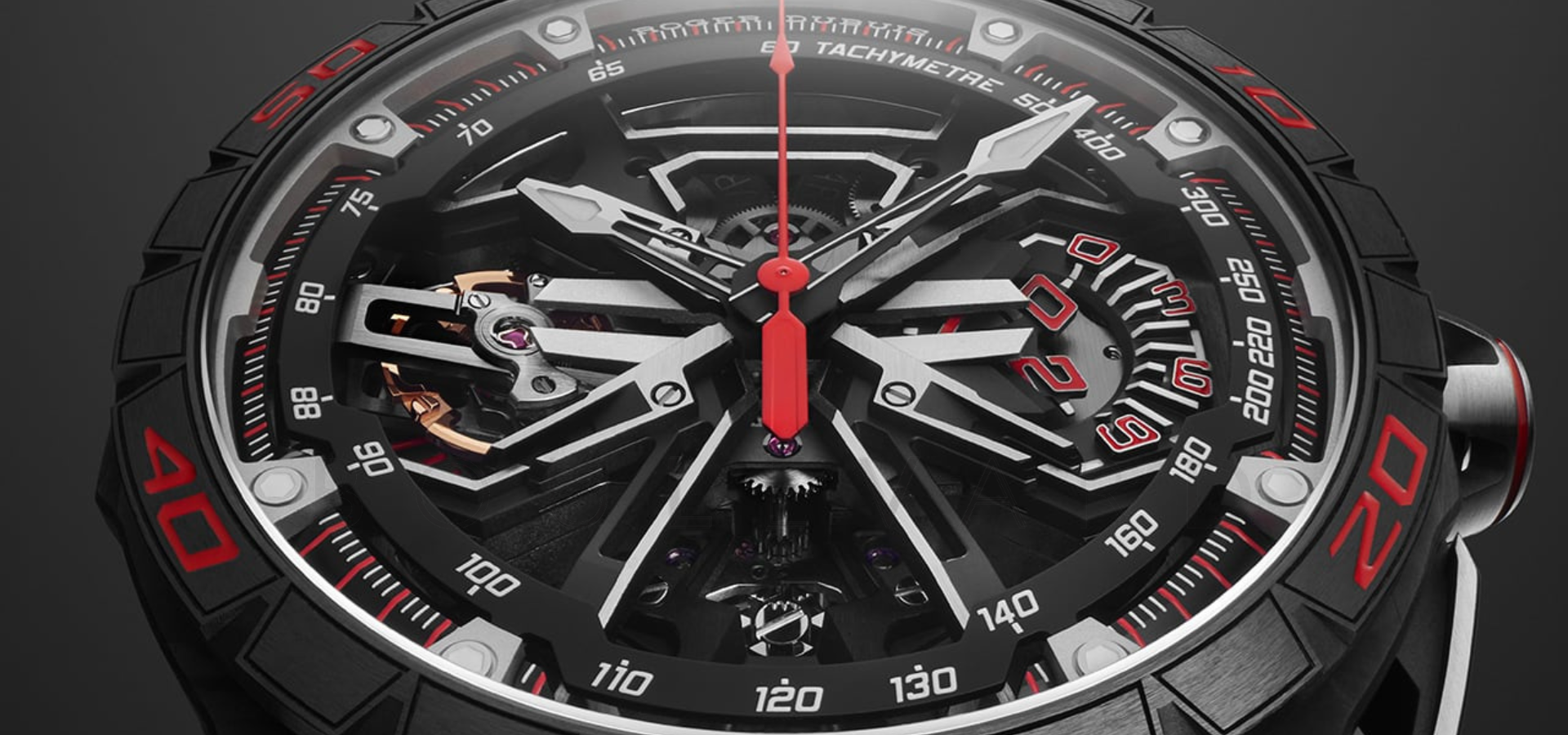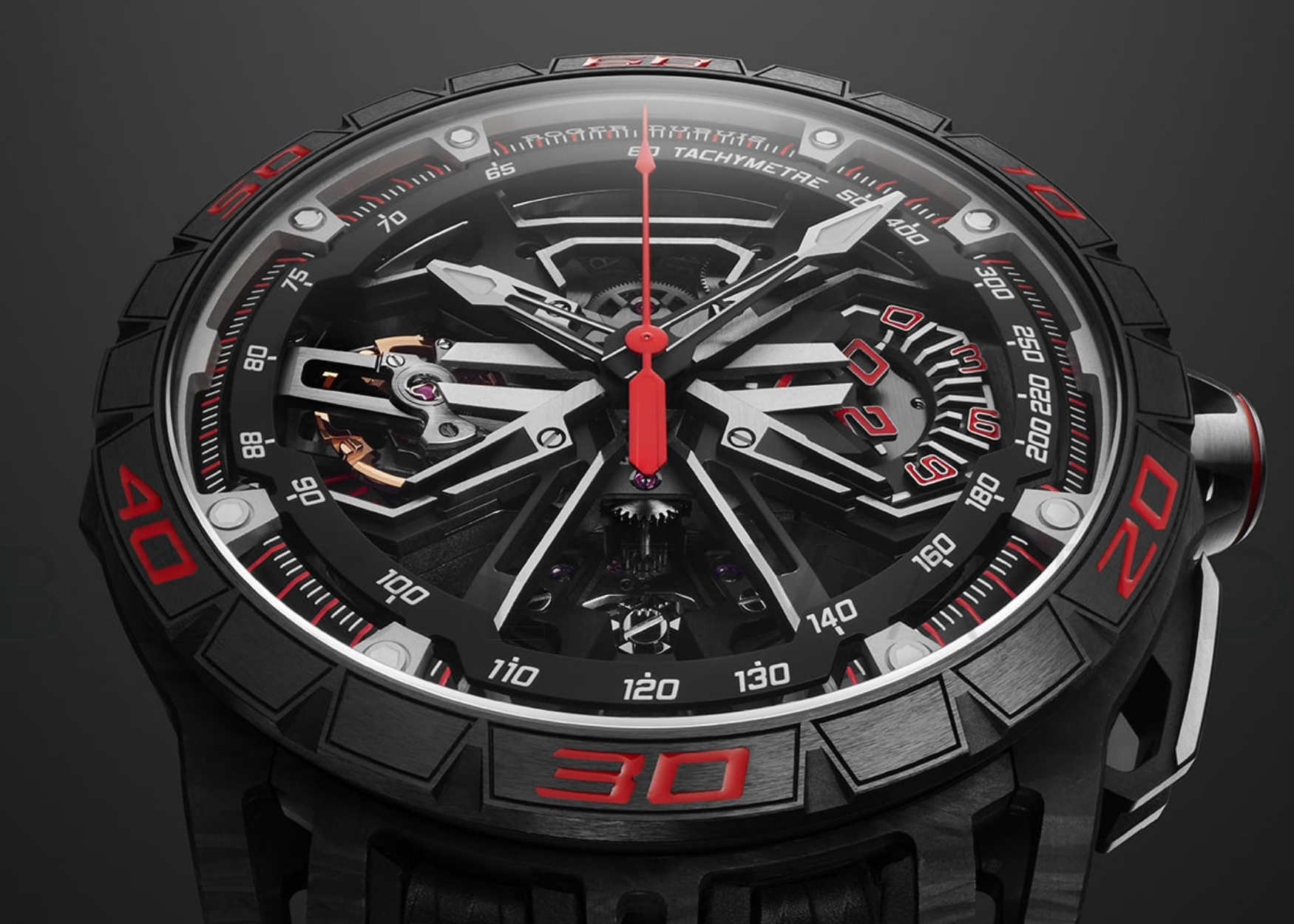The interview: Sadry Keiser, CMO of Roger Dubuis, looks back on five generations of chronographs
“The chronograph complication holds a dear place in our Maison,” Roger Dubuis Chief Marketing Officer (CMO) Sadry Keiser says. “Mr. Roger Dubuis was passionate about traditional horological complications, so when he launched his company in 1995, he included a chronograph calibre in the very first watches he created.”
The master watchmaker, of course, famously worked with Patek Philippe, where his own vision would slowly come into fruition. In turn, the early days of the Roger Dubuis would reflect the styling cues of the more established Maison, albeit with some personal cheeky tweaks. Nevertheless, the same adherence to traditional horological complications applied, dictating the path toward the kind of hyper horology one expects from Roger Dubuis today.
The first generations of the chronographs would lead to some iconic timepieces under the Hommage and Sympathie series. In the former’s case, it borrowed much of its foundation from the Lemania 2310. Roger Dubuis chronographs made use of the ébauche present in Patek Philippe calibres.
Its next breakthrough would take about three more years, when the fully integrated RD28 calibre came to be. Fourteen years later, Roger Dubuis would break new ground yet again with a tourbillon, which celebrated the 125th anniversary of the Poinçon de Genève. The fourth-generation chronograph, on the other hand, would come in 2014.
Now, enter the Excalibur Spider Flyback Chronograph and the Excalibur Spider Revuelto Flyback Chronograph, fifth-generation chronographs that honor the Maison’s avant-garde horological direction.
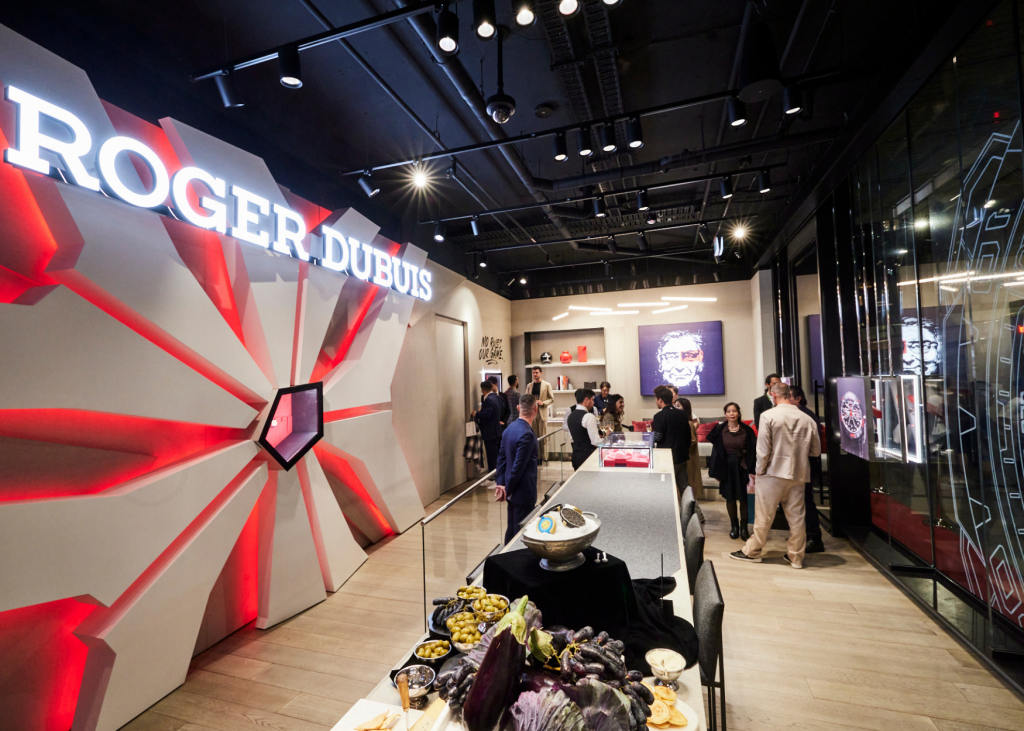
Keiser says that these watches are feats of supercar engineering in many ways, with two pending patents and a new flyback chronograph calibre (the latter is a byproduct of the brand’s longstanding partnership with Lamborghini Squadra Corse). The latest timepieces follow the announcement of Roger Dubuis’ more futuristic MonovortexTM Split-Seconds Chronograph at the Watches and Wonders earlier this year.
Hyper horology in overdrive, that’s what these fifth-gen chronographs bring (fittingly, too, the Excalibur Spider Flyback Chronograph, in particular, is set to debut at Goodwood Festival of Speed). The main task of Roger Dubuis, Keiser notes, is to reinterpret classic horological complications in a more modern way.
“We kept traditional elements of the complication,” Keiser states. “This can best be seen in the integrated calibre and a column wheel positioned at the front of the watch.”
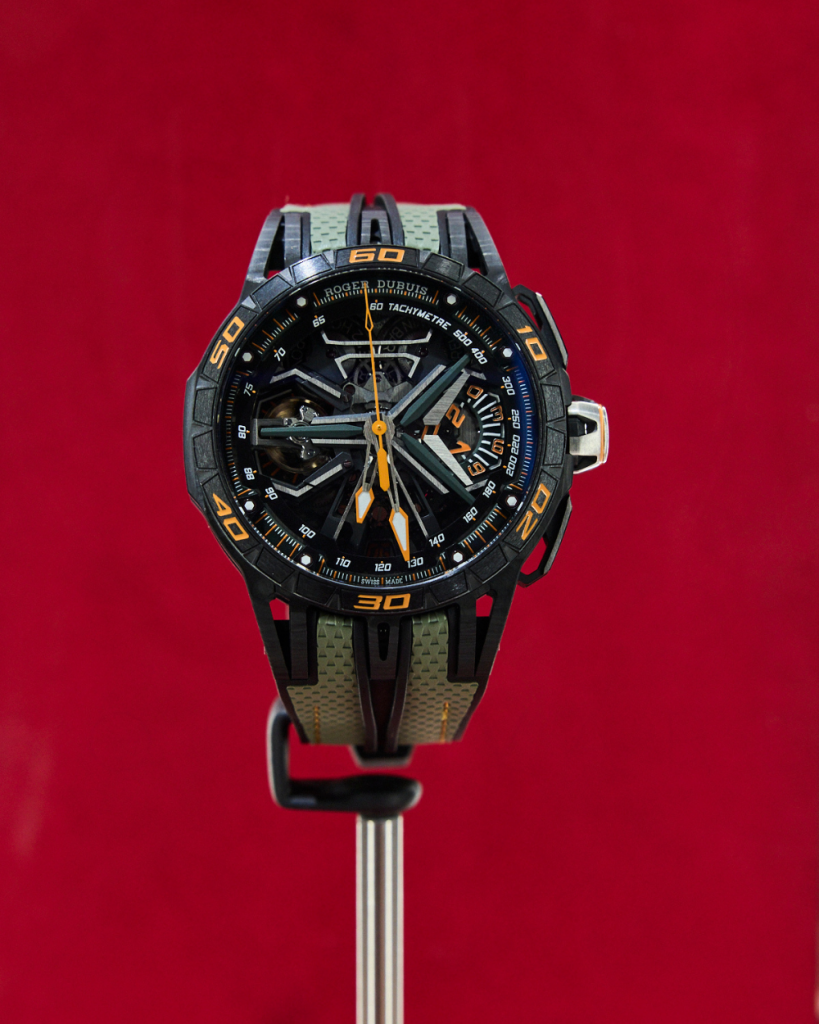
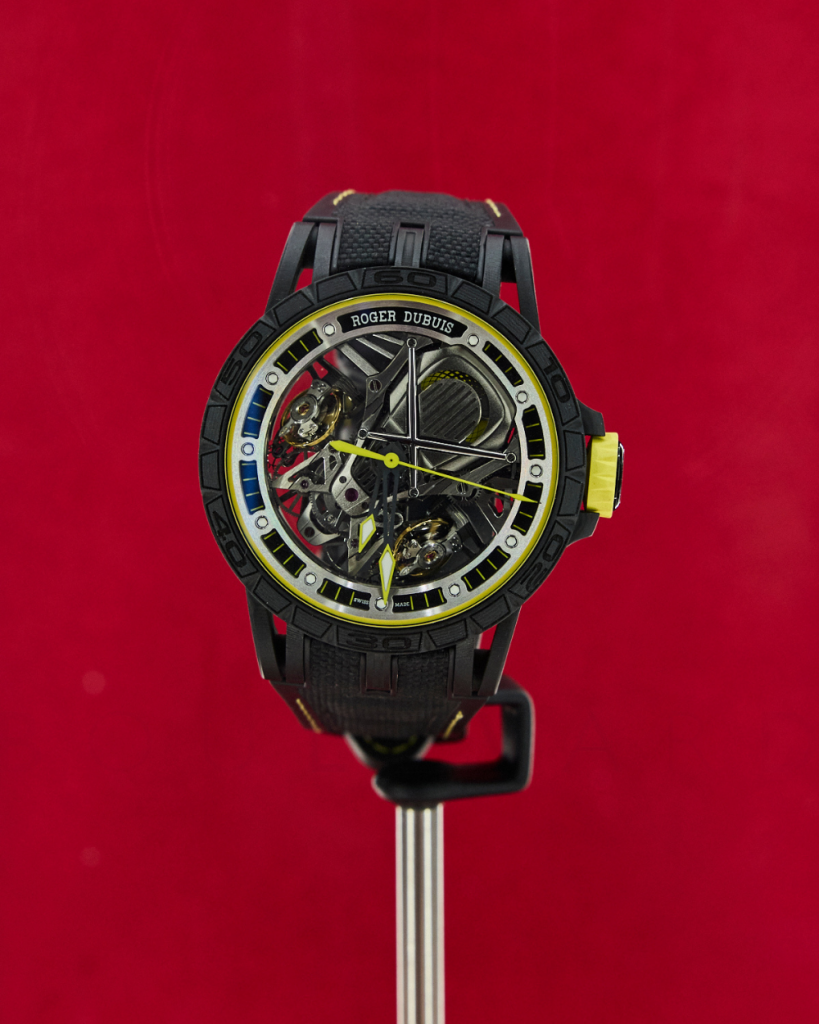
The aesthetics of traditional fine watchmaking persist, reserved for eagled-eyed connoisseurs. There’s the integrated calibre with the RD780, then the vertical clutch and column wheel, neatly placed at 6 o’clock and completely visible from the front.
Enclosed in a 45-mm case made of lightweight carbon, the traditional calibre complements the skeletonised pushers and ceramic bezel of the watches. “With these choices of material, we make the watch contemporary while also paying a tribute to supercar construction.” Best of all, each element has been aligned to meet Roger Dubuis’ signature skeleton design.
There are actually two major innovations at play here, both of which showcase the brand’s adaptability. “To make the Flyback function more precise, we equipped the calibre with an innovative Second Braking System,” Keiser claims. “This brake, directly attached to one of the clamps, offers extra stability to the chronograph seconds hand and drastically decreases its flicker.”
The other can be found in the counters, where Roger Dubuis decided to toy around with one of them. “At 3 o’clock, you can see our 120-degree Rotating Minute Counter moving ingeniously as soon as you start the chronograph.”
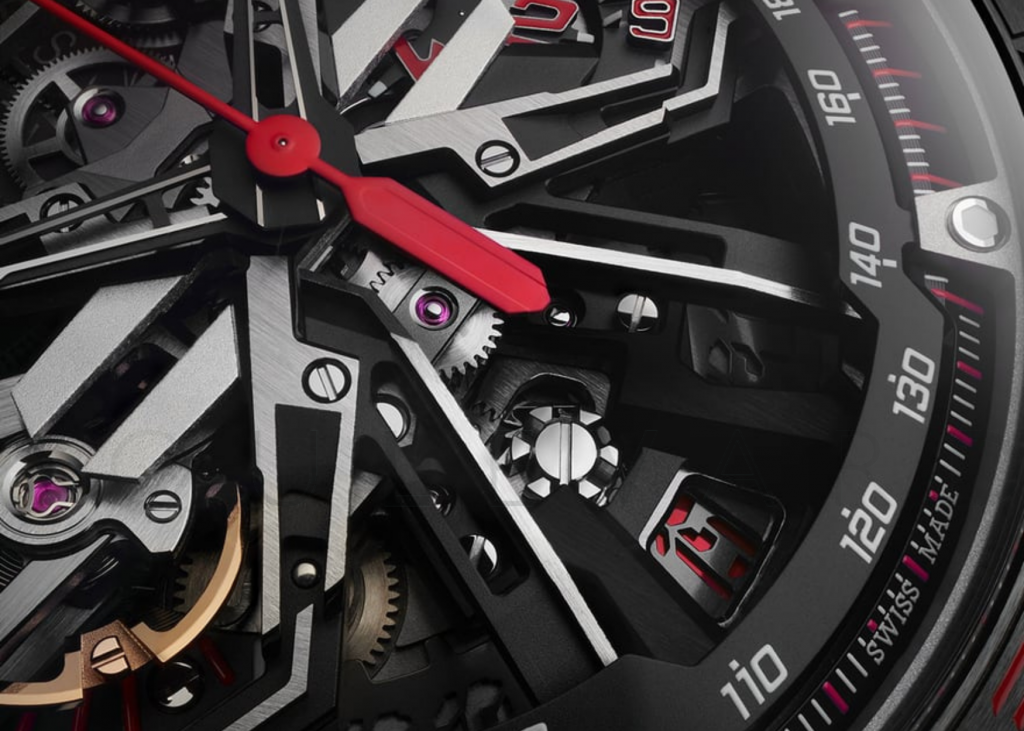
So then, one must ask: Where do these pieces stack up against such a prestige portfolio? “I would say that our Excalibur Spider Flyback Chronograph stands out because of its skeletonised design,” the CMO says of the new line, “the choice of the materials and the fact that this Is one of very few chronographs bearing the prestigious Poinçon de Genève.”
These watches are exercised in immersive multi-dimensional design. After all, the depth of different surface levels combined with this revamped take on horological dynamism has allowed the complication to find new life in the face of modern trends.
“We challenge the limits of fine watchmaking and our own capacities,” he concludes. “We also seek to do better and to come with unexpected and extravagant creations. These chronographs are the living proof of that.”
